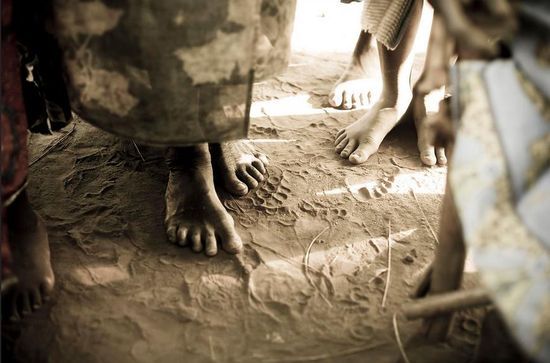
In 2017, the WHO added chromoblastomycosis (also called chromomycosis) to the list of neglected tropical diseases. Chromoblastomycosis is a chronic, progressive fungal infection of the skin and subcutaneous tissue. It is caused by melanized fungi that live in the soil and plant matter and primarily affects people living in tropical and subtropical regions. The primary mode of infection is by traumatic inoculation (e.g., during agricultural work). Early diagnosis and treatment are critical, as the disease can progress to involve tissue fibrosis and severe lymphedema, leading to stigma and disability. Prevention methods, including the use of protective clothing and shoes, have the potential to reduce infections.
This course is intended to provide basic information for front-line health workers to recognize and treat chromoblastomycosis. The course will also present notes from the field to demonstrate how this fungal disease is managed in different parts of the world.
Photo Credit: WHO / A. Tao
Language: English
NTD
Course information
This course is also available in the following languages:
Overview: Chromoblastomycosis, an implantation mycosis (fungal disease), is a chronic infection of the skin and subcutaneous tissue. It normally affects immunocompetent people in tropical and subtropical areas, causing substantial stigma and disability. Travel-associated disease can occur worldwide.
The aim of the course is to provide information on the epidemiology, clinical presentation, diagnosis, treatment, and public health interventions for chromoblastomycosis. This course is designed to increase knowledge and skills of national program managers and front-line health workers to address this disease. The course also provides notes from the field from several countries to highlight successful approaches to the management of chromoblastomycosis in different regions.
Course duration: Approximately one hour.
Certificates: A Certificate of Achievement will be available to participants who score at least 80% in the final assessment. Participants who receive a Certificate of Achievement can also download an Open Badge for this course. Click here to learn how.
What you'll learn
- Describe the geographical distribution of chromoblastomycosis
- Identify common clinical presentations of chromoblastomycosis
- Explain different laboratory techniques to identify fungi that cause chromoblastomycosis
- Describe treatment and non-pharmacological interventions for chromoblastomycosis
- Identify the impact stigma has the social well-being of patients with chromoblastomycosis
- Explain how different countries are addressing chromoblastomycosis in their regions
Course contents
Module 1: Introduction:
This introductory module gives an overview of Neglected Tropical Diseases, skin-NTDs and chromoblastomycosis.Module 2: Epidemiology and clinical presentation of chromoblastomycosis:
By the end of this module, you will: explain what the causative organisms are and how they are transmitted; describe the geographical distribution of chromoblastomycosis and its prevalence; identify common clinical presentations of the disease.Module 3: Laboratory diagnosis and treatment. Stigmatization and socioeconomic impact:
By the end of this module, you will: explain different laboratory techniques to identify fungi that cause chromoblastomycosis; describe pharmacological and non-pharmacological interventions; identify the impact of stigma on the social well-being of patients with chromoblastomycosis.Module 4: Notes from the field: Brazil, China and Madagascar:
By the end of this module, you will identify how health care workers in Brazil, Madagascar, and China control and manage chromoblastomycosis in their respective countries.
Enroll me for this course
Certificate Requirements
- Gain a Record of Achievement by earning at least 80% of the maximum number of points from all graded assignments.
- Gain an Open Badge by completing the course.